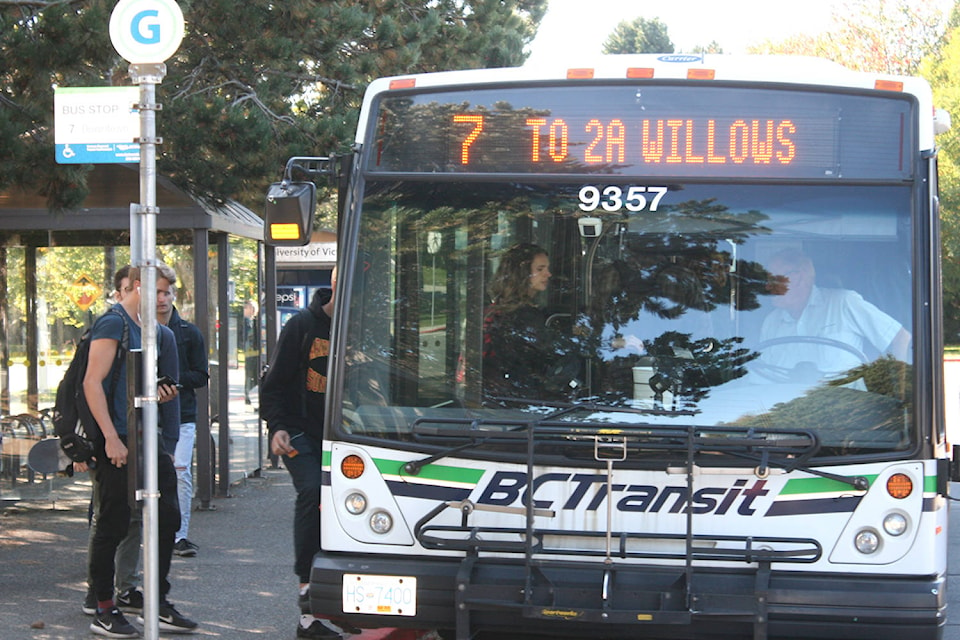While it won’t happen tomorrow, younger adults using post-secondary institutions and older seniors may soon drive Saanich’s local transit system in different directions.
The key word in this scenario is demography. According to Transit Future Plan by BC Transit, the population of the Capital Regional District will grow by 30 per cent to an estimated figure of 453,000 by 2038. Much of this growth, however, will occur at the upper end of the age pyramid, as the population of seniors aged 65 and older is expected to increase 120 per cent over the next three decades from 60,000 to 131,000. This group also has the “least propensity” to ride transit, according to the report.
Correspondingly, an aging society means fewer young people and therefore fewer workers, a trend line that could lessen the need for transit, a possibility the report sums up: “Relatively slow growth of both the youth group and the working age group versus the rapid increase in the number of seniors in the region could mean that the percentage of riders commuting to work and school may diminish in the future,” it reads.
Demographics, in other words, could make it more difficult to justify spending money on transit, which currently accounts for about 6.4 per cent of total travel in the region. By comparison, private vehicle travel accounts for 80 per cent, while active transportation modes, such as walking and cycling, account for 13 per cent of all trips.
Coun. Susan Brice, who chairs the Victoria Regional Transit Authority, said efforts are underway to make buses physically more accessible for seniors and encourage transit use through densification.
At the same time, it is rather unlikely that the current and future provincial government will abandon current commitments towards post-secondary education, commitments that benefit first and foremost younger demographics. Or in other words, the very people who are more likely to use transit.
“That is part of the conundrum,” said Brice. “They are the biggest users [of transit] and they have the most specific needs,” she said.
Post-secondary students accounted for 19 per cent of all transit riders in 2016/17. Each day, BC Transit runs over 1,100 scheduled transit trips to and from the University of Victoria, 650 scheduled transit trips to and from Camosun’s Lansdowne campus, and 305 scheduled transit trips to and from Camosun Interurban campus. Figures suggest that their demand for transit will only increase.
According to the Transit Future Plan report, the University of Victoria is planning to increase its student population by 80 per cent over the next 20 years under a scenario of medium growth. This development “will likely support the continued growth of transit ridership,” it reads. This possibility promises to put additional strains on the system serving UVic.
Transit capacity at UVic has improved markedly since that report, said Brice, pointing to the recent expansion of UVic’s transit exchange, the largest of the regional transit exchanges. Improvements are also ongoing, she said, pointing to the recent introduction of new two routes, one of which directly serves Royal Roads University, among other changes.
One way to ease the strain on the system serving UVic would be for more students to live closer to campus, if not directly on it, said Brice. But student leaders have noted that the economics of housing in Greater Victoria have complicated this. As housing prices have risen, students have found themselves living farther away from campus to take advantage of lower housing costs, according to anecdotal evidence. If so, more resources will have to go towards linking the region’s outlying areas such as the West Shore and Saanich Peninsula with the communites in the inner core.



